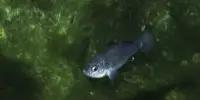Climate change, ocean acidification, pollution, overfishing, and physical destruction are all risks to coral reefs. Methods of preservation strive to alleviate these challenges and maintain coral reefs, which are critical ecosystems that support a vast range of marine species.
An interdisciplinary team of scientists revealed that coral may be maintained using a new technology known as isochoric vitrification. This procedure involves the cryopreservation and subsequent resuscitation of chosen coral fragments.
Coral reefs face rising risks as ocean temperatures increase, and ecosystem deterioration has escalated in recent decades. The ability to conserve and resuscitate biodiverse coral samples has become a critical concern for the world’s oceans’ health and future.
An interdisciplinary team of researchers led by Texas A&M University revealed that living coral may be preserved using a new technology known as “isochoric vitrification.” This procedure involves the cryopreservation and resurrection of chosen coral fragments. The method allows the coral to be rapidly chilled to -196 degrees Celsius (about -321 degrees Fahrenheit) without the formation of ice, which is fatal to coral and most organic things.
Everyone benefits from the health of the world’s oceans, be it by eating fish, living in a coastal community that benefits from reef-driven tourism, or simply enjoying a walk on the beach. Coral reefs are essential to the baseline health of our oceans, and cryo-conservation of endangered coral species can help to ensure that these invaluable and marvelous organisms do not go extinct.
Powell-Palm
“This work is an interdisciplinary collaboration that unifies the experts in coral preservation with experts in cryothermodynamics,” said Dr. Matthew Powell-Palm, lead author on the project. “It’s this collaborative marriage of fundamental thermodynamic advancements and fundamental advancements in coral biology and husbandry that have enabled our breakthrough success in whole coral cryopreservation.”
The findings of the research team were reported in Nature Communications. Dr. Mary Hagedorn and Dr. E. Michael Henley of the Smithsonian’s National Zoo and Conservation Biology Institute (NZCBI) worked with Powell-Palm, as did Dr. Boris Rubinsky of the University of California, Berkeley.
Powell-Palm, an assistant professor in Texas A&M’s J. Mike Walker ’66 Department of Mechanical Engineering, and Rubinsky spearheaded the research that resulted in the isochoric vitrification technology. Hagedorn and Henley put the process to use by preserving coral fragments at the Hawaii Institute of Marine Biology. Revive and Restore, a conservation organization, supported the initiative.

Year-Round Sampling
Previous methods of cryopreservation involved collecting coral reproductive matter while the coral reproduced, which was limited to a few days out of the year and in often difficult-to-access locations. Developing a technique not limited by the coral’s reproductive schedule makes it possible to extract and preserve coral throughout the year at any time.
To keep the coral fragment from freezing, the researchers first bleached it, which removes a symbiotic photosynthetic algae from the coral. In nature, coral bleaching is often connected with overstress, which leads to hunger in the organism. It was observed, however, that by using isochoric vitrification without bleaching, the algae generated ice pockets. After removing the bleached coral piece, the researchers were able to keep it in a glassy form by immersing it in a chemical solution and putting it in a customized aluminum container that was then rapidly cooled using liquid nitrogen. The coral was then warmed and revitalized by progressively reintroducing filtered saltwater over a 20-minute period.
While the technique is scientifically sophisticated, Powell-Palm said one of its greatest strengths is the simplicity of the technology required to apply it.
“When compared to other emerging vitrification techniques, which frequently require lasers, electromagnetic implements, or other high-tech laboratory equipment,” Powell-Palm added, “our isochoric vitrification approach is exceedingly fieldable. There are no moving parts or electronics required, and the protocol can be implemented by a field technician with no prior knowledge of thermodynamics. This is critical to the viability of any conservation strategy since, when used in real marine field stations, the high-tech lab infrastructure seen in many laboratories will not be available. From a purely technological standpoint, the approach is straightforward, robust, and suitable for use in the field.”
Long-term survival
In the future, the researchers hope to lessen the stress exerted on coral throughout the process. While the researchers were successful in preserving and reviving one type of coral, the observed life span was only up to 24 hours post-thaw. Researchers intend to achieve long-term survival for vitrification subjects and speedy implementation of the technique into real-world conservation efforts by decreasing the overall stress exerted on the coral.
“Everyone benefits from the health of the world’s oceans, be it by eating fish, living in a coastal community that benefits from reef-driven tourism, or simply enjoying a walk on the beach,” Powell-Palm said. “Coral reefs are essential to the baseline health of our oceans, and cryo-conservation of endangered coral species can help to ensure that these invaluable and marvelous organisms do not go extinct.”















